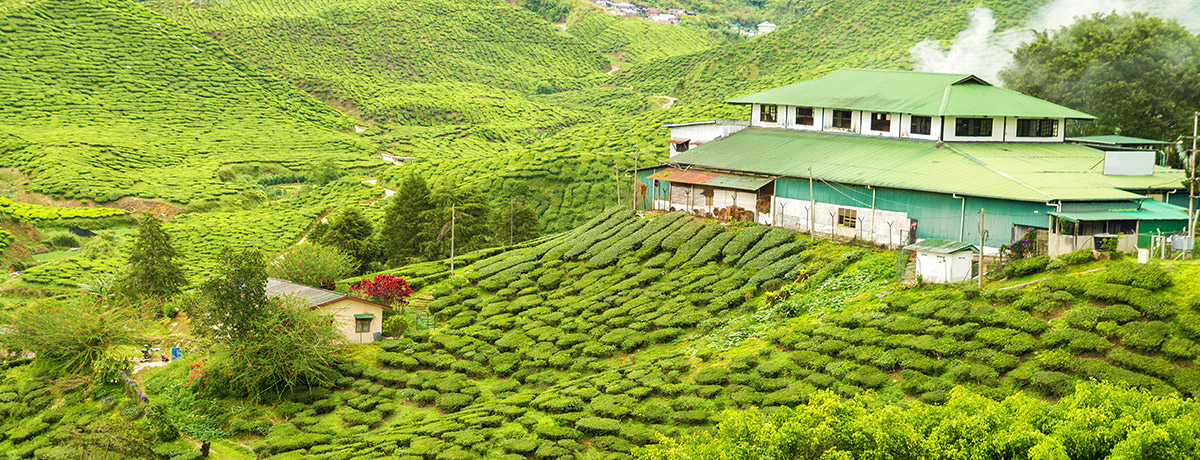
For most of us, a hot cup of tea in the morning is a refreshing start and one in the afternoon is necessary to get a relief from the day’s stress and tiredness. Ever wondered how the tea leaves were processed into the form that we see in the packets now? Well, here’s your incredible chance to explore the process in detail! The Tea factory visit in Munnar to Harrisons Malayalam Tea Factory (entry fees to the factory are applicable) will give you all the information for your queries regarding the processing of tea leaves. An added pleasure; you can see the process for yourself in-person! During the tea factory visit, see for yourself and enjoy every step during which the tea leaves are processed and at the end of the tour, enjoy a cup of delicious freshly prepared tea! There are provisions within the factory premises to buy the freshly prepared tea leaves all ready and packed.
With cool temperatures, Munnar has favourable climatic conditions that are suitable for its cultivation. Hence, the place has a number of tea plantations that belong to the best tea producers in the business market. A major sight for which Munnar is quite famous for is the green tea plantations that one can spot as they arrive at Munnar. The sight of the tea plantations adorned in nature’s prime colour, flawless green itself is a breath-taking one. For sure one would have given it a thought as to how the tea leaves that we purchase from market is made from these plants. The best accurate answer for that question will be given by the tea factory visit in Munnar activity. Just to brief up, a small descriptive process of the same is included below.
The tea leaves processing method in general
The first step in the process is plucking. The plantation workers pluck the fresh tea leaves, which usually include a bud at the extreme end and two young leaves. Once the leaves are plucked, it’s now time to take them to the tea estate for further processing. The next process is the sorting process. Since, leaves of different sizes brew differently, leaves of the same size are grouped together. The freshly plucked tea leaves would be full of moisture on their arrival at the tea estate. This next step, known as withering reduces this moisture content in them by drying them up by passing air on them gently.
In the next step the withered tea leaves are torn or bruised in order to quicken up oxidation. The process is known as disruption and is usually done by kneading, crushing, tearing or rolling the withered tea leaves. The next step in the tea leaves processing process is oxidation. This step is important as it decides the colour, strength and taste of the tea. In this step, the tea leaves are laid out on a flat surface for some time at a temperature of about 26℃. All the while they are laid out, the enzymes present in the leaves react with the air causing the colour of the leaves to change from green to darker shades. For obtaining tea leaves that make tea with a lighter taste, the leaves are taken out when they are light brown in colour. For a strong taste, the leaves are laid out further till their colour is darker.
The leaves are now ready for the final step in the processing which is drying. In this step the oxidised leaves are further dried by methods like baking, sunning, panning or air drying to further reduce the moisture content in them before they are ready to be packed and shipped out.
